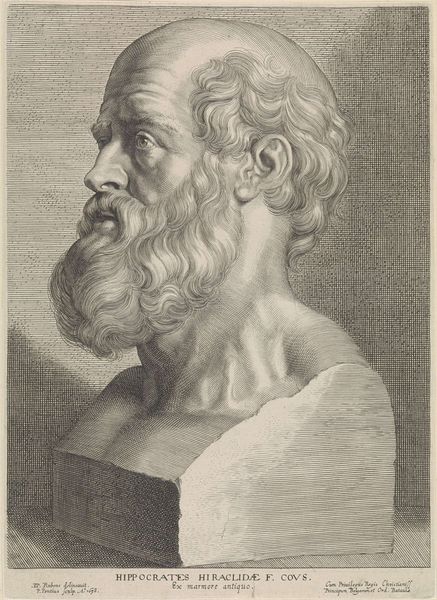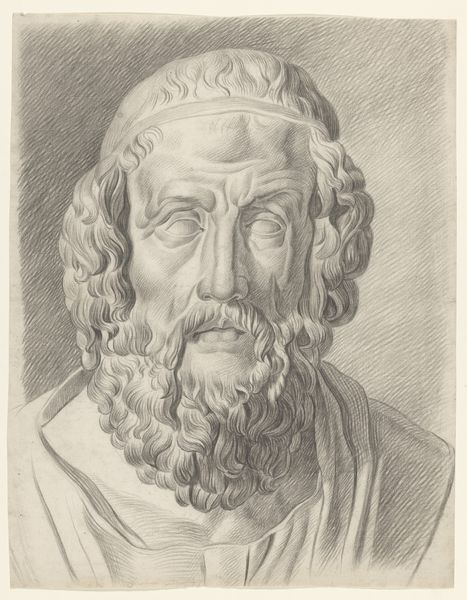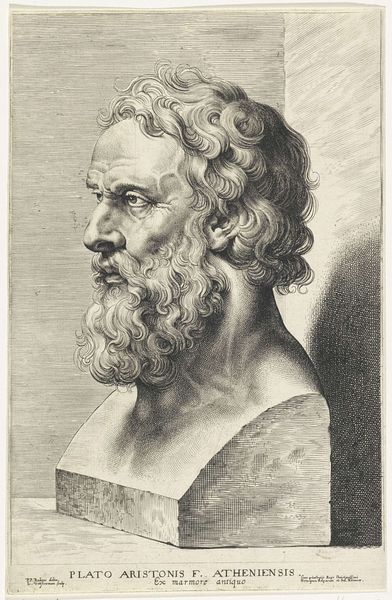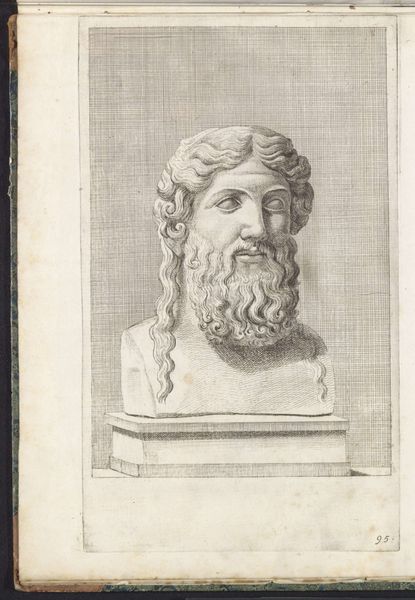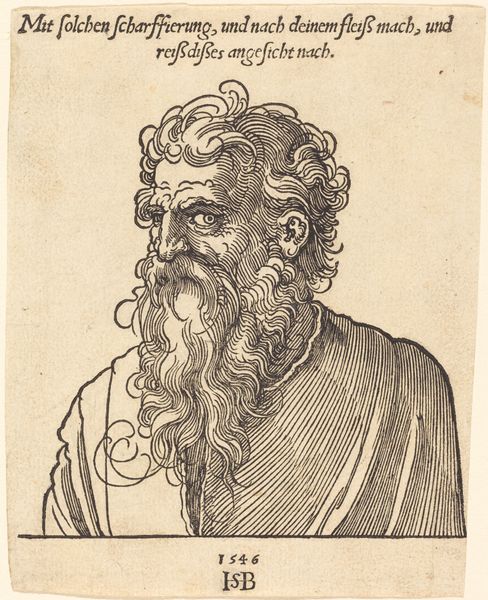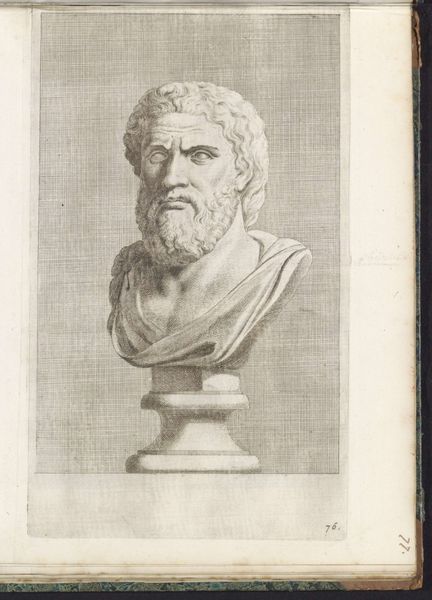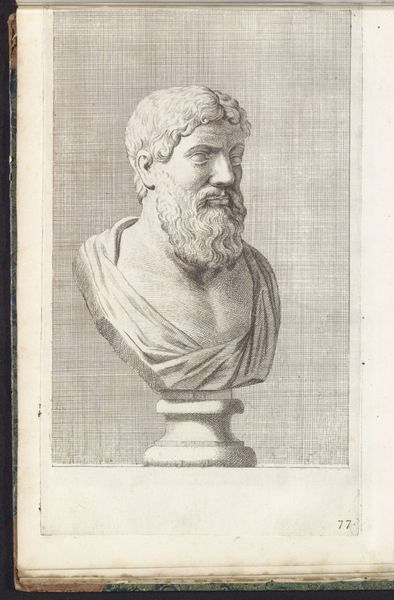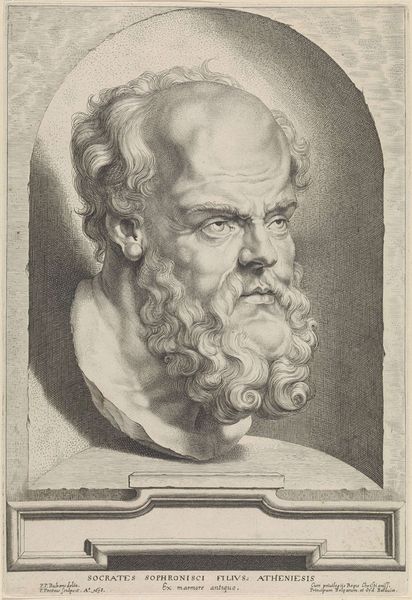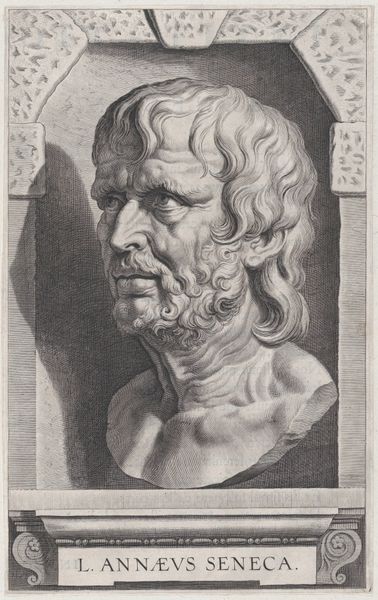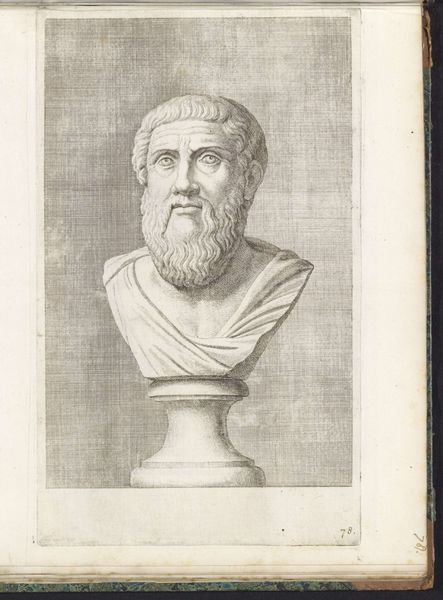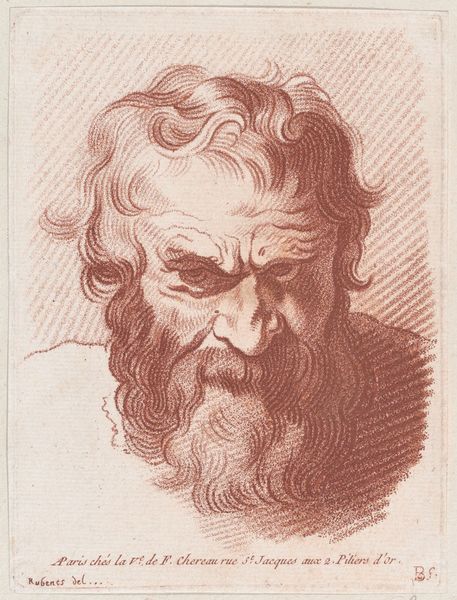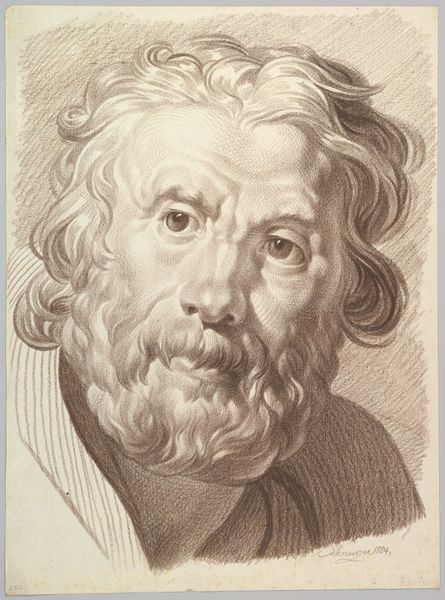
drawing, print, engraving
#
portrait
#
drawing
#
baroque
# print
#
greek-and-roman-art
#
history-painting
#
engraving
Dimensions: plate: 12 1/16 x 8 11/16 in. (30.6 x 22 cm) sheet: 13 3/16 x 9 5/8 in. (33.5 x 24.4 cm)
Copyright: Public Domain
Paulus Pontius created this engraving of Sophocles after a painting by Rubens. The image participates in the 17th-century European vogue for classical antiquity. This enthusiasm was inflected by politics and religion. In the Protestant Netherlands and elsewhere, the ancient world was a shared cultural inheritance, relatively free from associations with the Catholic Church and the Habsburg monarchy. Figures such as Sophocles, the Athenian playwright, were seen to embody wisdom and civic virtue. But how to represent them? Here, the artists relied on the visual codes of their own era: the chiaroscuro shading, the weighty folds of drapery, and the overall air of drama were hallmarks of the Baroque style, associated with artists like Rubens. Engravings like this, distributed widely, played a key role in shaping perceptions of the ancient world. Art historians can study these images alongside other historical documents to better understand the cultural and institutional forces at play.
Comments
No comments
Be the first to comment and join the conversation on the ultimate creative platform.
